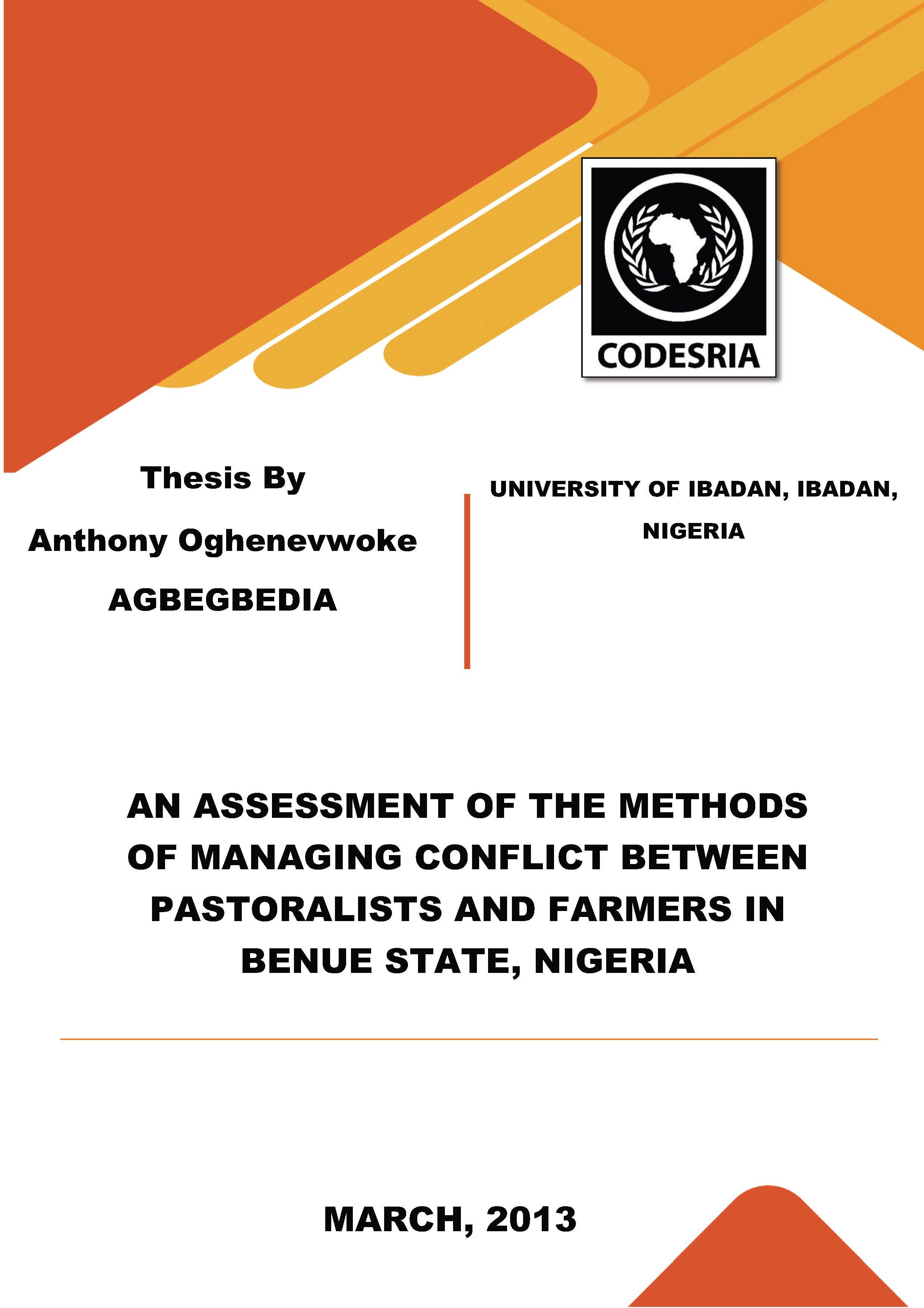AN ASSESSMENT OF THE METHODS OF MANAGING CONFLICT BETWEEN PASTORALISTS AND FARMERS IN BENUE STATE, NIGERIA
Keywords:
Conflict resolution, pastoralists, farmers, conflict resolution, Benue State, NigeriaSynopsis
Conflicts between pastoralists and farmers often caused by destruction of farmers’ crops by pastoralists’ herds and resource scarcity are rampant in Benue State, Nigeria, mainly because, the people are predominantly farmers. While existing literature in the fields of agriculture, geography and environmental studies have explored the causes and consequences of this conflict in Benue State, little has been done to assess the methods of managing it. This study, therefore, carried out an assessment of the methods of managing the conflict between pastoralists and farmers in Benue State.
Theories of political economy and environmental resource scarcity were adopted for the study. The study adopted the survey research design. Data were collected through primary and secondary sources. Five communities comprising Katsina-Ala, Abinsi, Gbajimba, Agila and Igumale were purposively selected for the study. In-depth interviews were conducted with 20 Key Informants comprising community leaders and four (4) Focus Group Discussions (FGDs) conducted with pastoralists and farmers. In addition, a total of 480 copies of questionnaires were administered to 140 resident pastoralists, 140 farmers, 100 security agents and 100 community leaders from selected communities. Secondary data were collected from published books, journal articles and the internet. Quantitative data were analysed using narrative and descriptive techniques such as frequency and percentage distribution while the qualitative data were content analysed.
Two recognised methods were adopted in managing pastoralists and farmers’ conflicts in Benue State, namely, the indigenous and the formal methods. The indigenous method includes ela otumin (mediation) epo oloche (traditional courts), orka o’ oka (informal discussions) and ojojira ko ole (community meetings) while the formal method includes court of adjudication, arbitration, litigation and security agents. The indigenous method was much preferred by the respondents and proved to have settled more conflicts than the formal method. This is because the method is cheaper, faster and makes justice more accessible. Mediation was used to settled 81.3% of the cases; traditional courts, 87.4%; informal discussions, 73.7%; community meetings 91.6%; adjudication, 15.1%; arbitration, 11.9%; litigation, 14.6% and security agents, 27.4%. Also, while the indigenous method employed the use of persuasion and reconciliation, the formal method aimed at legal and technical rationality in deriving its solution. The indigenous method provided a win-win dimension while the formal method provided a win-lose dimension. The indigenous method was used to
Downloads






